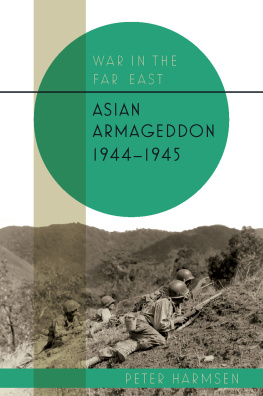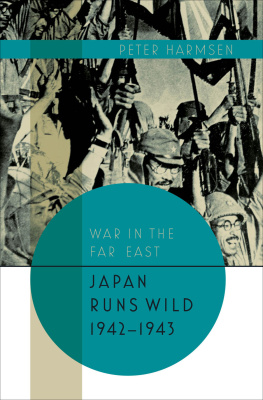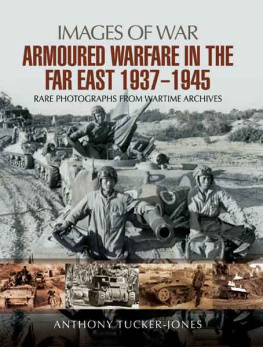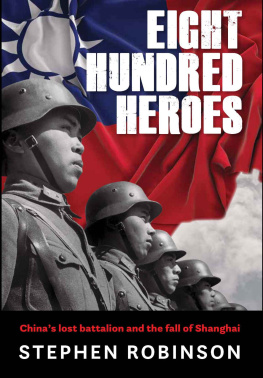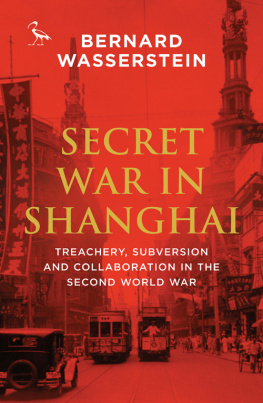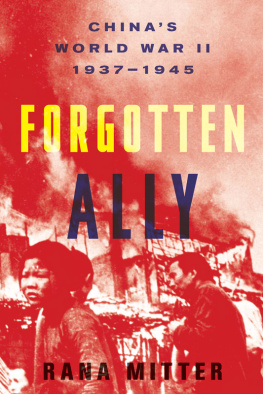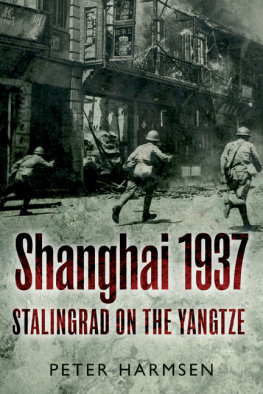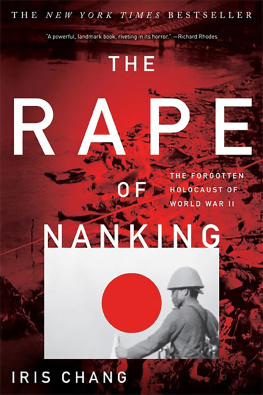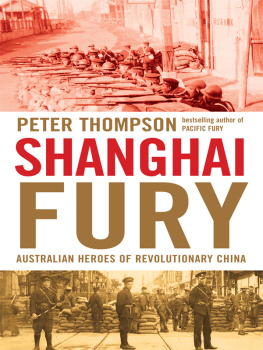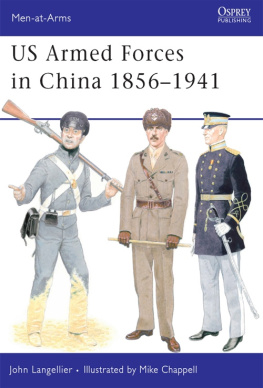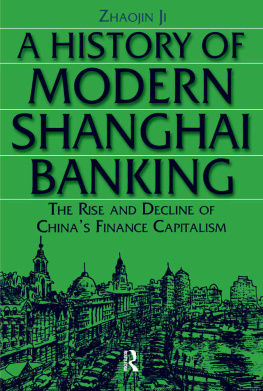Peter Harmsen - Shanghai 1937: Stalingrad on the Yangtze
Here you can read online Peter Harmsen - Shanghai 1937: Stalingrad on the Yangtze full text of the book (entire story) in english for free. Download pdf and epub, get meaning, cover and reviews about this ebook. year: 2013, publisher: Casemate, genre: History. Description of the work, (preface) as well as reviews are available. Best literature library LitArk.com created for fans of good reading and offers a wide selection of genres:
Romance novel
Science fiction
Adventure
Detective
Science
History
Home and family
Prose
Art
Politics
Computer
Non-fiction
Religion
Business
Children
Humor
Choose a favorite category and find really read worthwhile books. Enjoy immersion in the world of imagination, feel the emotions of the characters or learn something new for yourself, make an fascinating discovery.

- Book:Shanghai 1937: Stalingrad on the Yangtze
- Author:
- Publisher:Casemate
- Genre:
- Year:2013
- Rating:5 / 5
- Favourites:Add to favourites
- Your mark:
Shanghai 1937: Stalingrad on the Yangtze: summary, description and annotation
We offer to read an annotation, description, summary or preface (depends on what the author of the book "Shanghai 1937: Stalingrad on the Yangtze" wrote himself). If you haven't found the necessary information about the book — write in the comments, we will try to find it.
In its sheer scale, the struggle for Chinas largest city was a sinister forewarning of what was in store for the rest of mankind only a few years hence, in theaters around the world. It demonstrated how technology had given rise to new forms of warfare, or had made old forms even more lethal. Amphibious landings, tank assaults, aerial dogfights and most importantly, urban combat, all happened in Shanghai in 1937. It was a dress rehearsal for World War IIor perhaps more correctly it was the inaugural act in the warthe first major battle in the global conflict.
Actors from a variety of nations were present in Shanghai during the three fateful autumn months when the battle raged. The rich cast included Chinas ascetic Generalissimo Chiang Kai-shek and his Japanese adversary, General Matsui Iwane, who wanted Asia to rise from disunity, but ultimately pushed the continent toward its deadliest conflict ever. Claire Chennault, later of Flying Tiger fame, was among the figures emerging in the course of the campaign, as was First Lady Eleanor Roosevelt. In an ironic twist, Alexander von Falkenhausen, a stern German veteran of the Great War, abandoned his role as a mere advisor to the Chinese army and led it into battle against the Japanese invaders.
Written by Peter Harmsen, a foreign correspondent in East Asia for two decades, and currently bureau chief in Taiwan for the French news agency AFP, Shanghai 1937 fills a gaping chasm in our understanding of the Second World War.
REVIEWS
enhances the bare facts with material gleaned from multiple diaries, reports, newspaper and magazine articles, books, and other accounts from combatants and civilians of all nationalities. In addition to on-the-spot impressions from a surprising number of Chinese and Japanese foot soldiers, the book also features eyewitness reports from and about foreigners living and working in the cosmopolitan city at the time. As the author notes, the battle of Shanghai was front page news throughout much of the world, and numbers of journalists from around the globe covered the fighting from both sides of the line while crossing in and out of the safety and comfort of the international concessions. Besides using many contemporary documents as sources, Harmsen has chosen to illustrate the book with an especially noteworthy selection of very striking wartime photographs. engaging account of a little-known battle. practically nothing else in English tackles this topic at this level. ..
Stone and Stone
Largely ignored in the West, Japan and China fought a horrible large-scale battle for the city of Shanghai from July to November 1937... Shanghai 1937: Stalingrad on the Yangtze relates the story of this awful months-long battle and its effect on later events... This book is meticulously researched, and vignettes are included from generals and privates alike. Civilian accounts, the bulk of them from residents of the International Settlement, abound. Most of the sources are translated Chinese works. The author weaves them together in a way that gives a sense of the battles breadth and horror. Readers interested in the history of the Sino-Japanese fighting of the 1930s will find this book a valuable addition to their libraries.
Military Heritage
...presents a gripping chronology of two sides locked in a horrific death dancegenuinely shines by interlacing the chronology with plenty of personal anecdotes and quotidian details an important reminder between Champagne brunches, art openings and fashion showsrivers of blood once flowed beneath our feet.
City Weekend Shanghai
Harmsen, a two-decade veteran of east Asia, demonstrates a breathtaking command of the battle itselffrom the 10,000 meter, panoramic view of the terrain and history, down to the platoon levelJapanese and Chinese grunts fighting, bleeding, starving and dying, and the types of knots that the Japanese used to tie their helmets on.
Asian Review of Books
In the voluminous literature on World War II, few books treat the Sino-Japanese War, and few of those are accessible to non-specialists. Thankfully, seasoned East Asian correspondent Peter Harmsen has written an engrossing study that goes far to fill the gap in the historiography of a neglected theater of operations and the first large-scale urban battle of the war. Historians of this battle do have certain advantages. Since Shanghai was a cosmopolitan city with a large contingent of foreign residents that stayed for the duration, scholars possess an additional source of primary documents and valuable eyewitness accounts. Harmsen takes full advantage of these. a compelling, quite detailednarrative history of an understudied war. gives easy entry into the secondary literature on the Sino-Japanese War.
Michigan War Studies
One of the most sobering things about reading history is realizing the ease with which the deaths of a millions can be forgotten in only a few decades. I am currently reading Shanghai 1937: Stalingrad on the Yangtze, by Peter Harmsen. I recommend it heartily. Even if you thought you knew all there was to know about the Second World War, if you havent read up on the Sino-Japanese conflict, youve missed one of its principal roots The Japanese were in real danger of losing the Battle of Shanghai, in part because the Chinese Army was advised by German officers, some of whom were Jewish and fleeing from Hitler.
The Belmont Club
rattles along like a modern techno-thriller and moves gracefully between descriptions of the tactical battlefield and the impact on the company, platoon or individual to the strategic machinations of the top brass and the movement of armies and divisions. Whilst the book piqued my interest in the pre Second World War Sino-Japanese conflict it stands very successfully as an excellent piece of military writing in its own right. One only has to be interested in warfare to appreciate this book.It is supported as is usual by a centre of black and white pictures showing Shanghai in the thirties and scenes from the conflict. Also there are a number of maps to allow you to follow the general course of the action.Overall this book is highly recommended. For wargamers it has got all the makings of an excellent campaign or demonstration game - naval gunnery support, tanks, direct tactical air support, two evenly matched forces, Marines, the what if scenario of conflict spreading into the International Settlement (other colonial powers had troops and naval forces in Shanghai), German military advisors and of course a cavalry charge! For military historians it is an interesting insight into the development of the tactical use of military technology in the lead up to the Second World War. And, finally, it is damn good read!
Wargamer
has all the elements of a fabulous historical novel. Yet from another angle it is a historical minefieldhe seamless way in which Harmsen weaves Chiangs international political maneuvering into battlefield strategy, combining the perspectives of regular privates and commanding generals, along with civilians and combatants, suggests his narrative was of long gestationone of the really remarkable features of Shanghai 1937 is the huge collection of high-quality photographs, all of them in-period and directly relevant to the action, in three 16-page inserts. Also, one cannot help noticing that many of them are credited to the authors collection... few who have read the book have failed to be gripped by the narrative.Taiwan Today
Whats special about this book is its comprehensiveness, shifting between Chinese, Japanese and foreign points of view to describe the causes of the battle, Chiang Kai-sheks strategy, the Chinese armys attack, the stalemate and the fall of Shanghai. The photos selected for the book also illustrate the operations on the two sides as well as the conditions endured by the people of Shanghai. . In addition to accounts by participants on both the Chinese and Japanese side as well as contemporary newspaper reports, the book also uses the memoirs of numerous foreigners. In this respect it is richer than a lot of works in the Chinese language.
Shenzhen Special Zone Daily
This is not traditional war history, but an extremely dramatic documentary thriller. Its based on facts, collected in meticulous and time-consuming fashion from diaries, newspaper articles, books and memoirs, but in contrast to much other war literature, you get so close to the actors, from generals to Chinese and Japanese privates and civilians, that as a reader you have to constantly remind yourself that this was real, involved a million soldiers, and was to lead to the global changes of the next ten years Peter Harmsen has written a book that has many qualities and extremely high information and entertainment value. Its about time that we reach a better understanding of the causes of World War Two, a chain of events where the battle of Shanghai had a much bigger impact than military historians in the west have realized so far. Shanghai 1937 is not only an invaluable piece of military history, but also a book with formidable powers of empathy that at times make the reader feel like an actual participant in the bloody events.
Jylla...
Peter Harmsen: author's other books
Who wrote Shanghai 1937: Stalingrad on the Yangtze? Find out the surname, the name of the author of the book and a list of all author's works by series.

